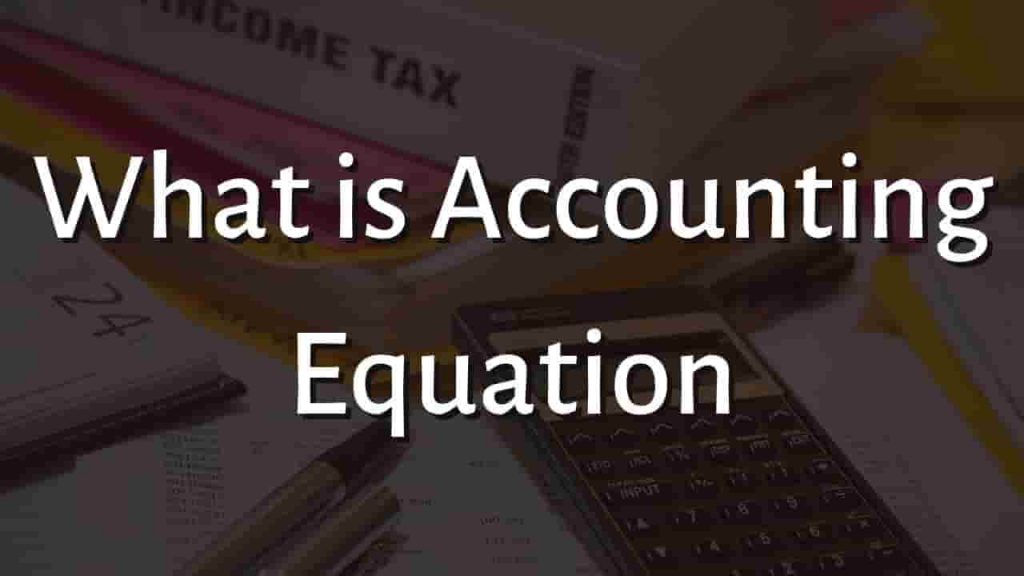What is Accounting Equation
The accounting equation is used in double-entry accounting to demonstrate the connection between assets, liabilities, and equity. According to the accounting equation, the entire worth of a company’s assets is always equal to its liabilities plus its owner’s equity. It is a key part of the balance sheet and a basic concept of accounting. The accounting equation is mention below:
Assets = Liabilities + Shareholder’sEquity
Why is Accounting Equation Important
The accounting equation ensures that the balance sheet stays “balanced” based on this double-entry method and that each entry made on the debit side has a corresponding entry on the credit side. Using the accounting equation, you can evaluate if you are financing your assets with business money or debt. The balance sheet equation is another name for the accounting equation.
The accounting equation aids in determining if a company’s business activities are correctly recorded in its books and accounts. The following are some examples of elements found on a balance sheet:
Assets
Cash and cash equivalents, as well as liquid assets such as Treasury bills and certificates of deposit, are examples of assets. The amount of money owing to the firm by its customers for the sale of its product and service is known as accounts receivables. Inventory is also considered a valuable asset. Furniture or fixture, office equipment, plant, and machinery are also fixed assets of a company.
Liabilities
Liabilities are the amounts that a firm owes or must pay in order to stay in business. Rent, taxes, utilities, salaries, wages, and dividends payable are all liabilities, including long and short-term debt.
Shareholder’s Equity
A company’s entire assets minus its total liabilities equals its shareholders’ equity. Shareholders’ equity is the amount of money that would be returned to shareholders if all of the company’s assets were liquidated and all of the debt was paid off.
The sum of total earnings that were not distributed to shareholders as dividends is known as retained earnings, and it is a component of shareholders’ equity. Consider retained earnings to be savings since they reflect a sum of profits that have been preserved, set aside, or kept for future use.
Example 1
Let’s assume that renowned retailer XYZ Corporation reported the following on its balance sheet for the fiscal year:
Total assets: $180 billion
Total liabilities: $130 billion
Total shareholders’ equity: $50 billion
Assets=(Liabilities+Owner’s Equity)
The right-hand side of the accounting equation (equity + liabilities) equals ($50 billion + $130 billion) = $180 billion, which is the same as the value of the company’s assets.
Example 2
Compute the missing figures from the following by using the accounting equation concept:
- Assets = $100,000, Liabilities = $30,000, Owner’s equity = ?
- Assets = ?, Liabilities = $15,000, Owner’s equity = $30,000
- Assets = $80,000, Liabilities = ?, Owner’s equity = $40,000
Solution:
By using accounting equation:
Asset = Liabilities + Owner’s Equity or shareholder’s equity
- Owner’s equity = Assets – Liabilities
= $100,000 – $30,000
= $70,000 - Assets = Liabilities + Owner’s equity
= $15,000 + $30,000
= $45,000 - Liabilities = Assets – Owner’s equity
= $80,000 – $40,000
= $40,000
You don’t use the balance sheet equation if your company utilizes single-entry accounting. Why? The answer is that the accounting equation shows a balance between the two sides of your general ledger. A balance on both sides of the general ledger is not required in single-entry accounting. You monitor your assets and liabilities separately if you use single-entry accounting. Instead of showing the impact of transactions on many accounts, you only input them once.
For more click here and if you are looking for full forms of different acronyms and words then check out this list you really gonna find this helpful. We also have an Essay on every topic, Check the complete list here. If you are Studying in Matric Free Video Lectures of Maths, Physics and English are here, and we have got you covered for I.COM Business Maths also.







